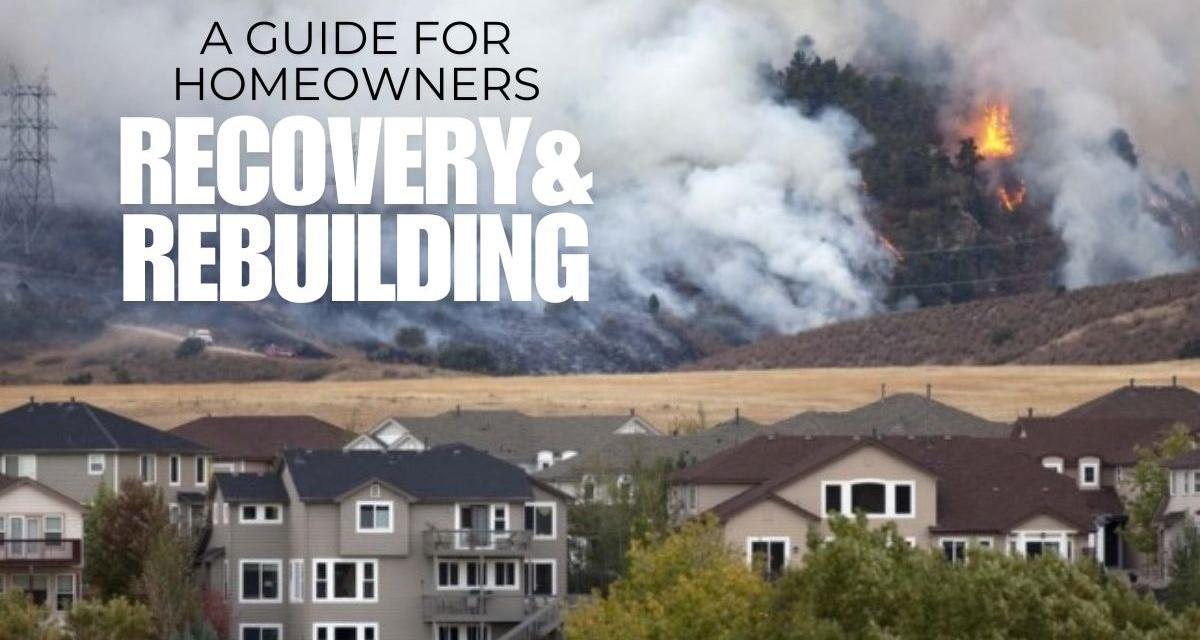Homeowner's Guide to Rebuilding After a House Fire

Losing your home in a fire is a devastating and life-altering event. We had close friends in Ventura that lost their home in the Thomas Fire and it has been a long process. Getting an education about the process of rebuilding your home can be very expensive, especially when those lessons come from looking out for your own money. Rebuilding after a loss can be very exciting, creative, and fulfilling, but it can also seem like a never-ending nightmare that bleeds you dry, both emotionally and financially. The difference between a good and a bad experience comes down to two things:
- How well prepared you are for the journey.
- How resilient you are when things change.
Remember that even in the best-planned projects, changes and surprises will occur. Whether it’s the weather, the contractors, the building department, or any of a zillion things that can throw a wrench into your project, one thing is certain: things will change.
We hope that this guide will provide a clear roadmap for managing the aftermath, rebuilding, or replacing your home, and moving forward with resilience and hope.
Step 1: Contact Your Insurance Company
- Immediate Notification: Inform your insurance company immediately to start the claims process.
- Document the Damage:
- Take photos and videos of all affected areas.
- Keep a record of lost belongings.
- Understand Policy Coverage:
- Coverage for rebuilding, demolition, or replacement costs.
- Additional living expenses for temporary housing.
Step 2: Assess the Damage
- Decide Between Rebuilding or Demolishing:
- Rebuilding allows customization and emotional continuity.
- Demolishing may simplify the process if rebuilding isn't viable.
- Consult insurers and fire restoration experts for guidance.
- Understand Costs:
- Work with a licensed professional to understand the demolition, renovation or rebuilding costs. (vary by size, materials, and location).
Step 3: Cleanup and Preparation
- Engage Professionals:
- Hire licensed contractors for debris removal.
- Clean soot, smoke residues, and HVAC systems to prevent lingering damage.
- Address Water Damage:
- Remove water promptly to prevent mold growth.
- Use dehumidifiers to dry out carpets and floors.
Step 4: Rebuild or Buy a Replacement Home
- Deciding Factors:
- Rebuilding: Offers customization but can be time-consuming.
- Buying: Immediate housing but may not fully match your previous home.
- California-specific laws: You can use insurance funds to buy elsewhere if permitted.
- Next Steps:
- Request a scope-of-loss report for rebuilding costs.
- Negotiate estimates with your insurer.
Step 5: Plan for Rebuilding
- Hire Qualified Professionals:
- Work with architects, engineers, and contractors experienced in fire restoration.
- Verify credentials and request references.
- Secure Necessary Permits:
- Research zoning regulations and building permit history.
- Obtain approvals for construction, water, and electricity connections.
- Incorporate Incentives:
- Investigate tax credits and rebates for energy-efficient rebuilding.
Step 6: Manage Contracts and Monitor Progress
- Understand Contract Types:
- Opt for Guaranteed Maximum Price (GMP) contracts to set cost limits.
- Avoid open-ended cost-plus contracts.
- Track Construction:
- Hold regular site meetings.
- Document changes with written change orders.
- Maintain payment records and lien waivers.
Step 7: Prevent Future Fires
- Incorporate Fire-Resistant Measures:
- Use non-flammable materials in construction.
- Update electrical and heating systems.
- Install Safety Features:
- Smoke detectors, fire sprinklers, and updated HVAC systems.
- Maintain Defensible Space:
- Clear vegetation and flammable debris near the house.
Step 8: Restoring Your Family’s Well-Being
- Seek Emotional Support:
- Engage counseling services and recovery groups.
- Connect with local recovery organizations, such as United Policyholders.
- Reduce Overwhelm:
- Break tasks into manageable steps.
- Lean on community support and resources.
Remember to get enough rest, eat well, baby yourself. A holistic approach to wellness can be very useful…good diet, exercise, sleep, support from family and friends, journaling, possible therapeutic interventions, acupuncture and other modalities known for stress reduction, including medication if needed. This is a long, tough ride but you will get through it.
By taking these steps, you can rebuild not just your house, but a safe and stable home for your future.
If you need help or resources along the way, don’t hesitate to call us for professional advice and connect with recovery networks.
HELPFUL RESOURCES:
VENTURA COUNTY RECOVERS: www.venturacountyrecovers.org
CITY OF CAMARILLO: www.cityofcamarillo.org/mountain_fire/index.php
VENTURA COUNTY ANIMAL SERVICES: www.vcas.us
VENTURA COUNTY FIRE DEPARTMENT: vcfd.org
AMERICAN RED CROSS: www.redcross.org
FOOD RESOURCES: foodshare.com/findhelp.
